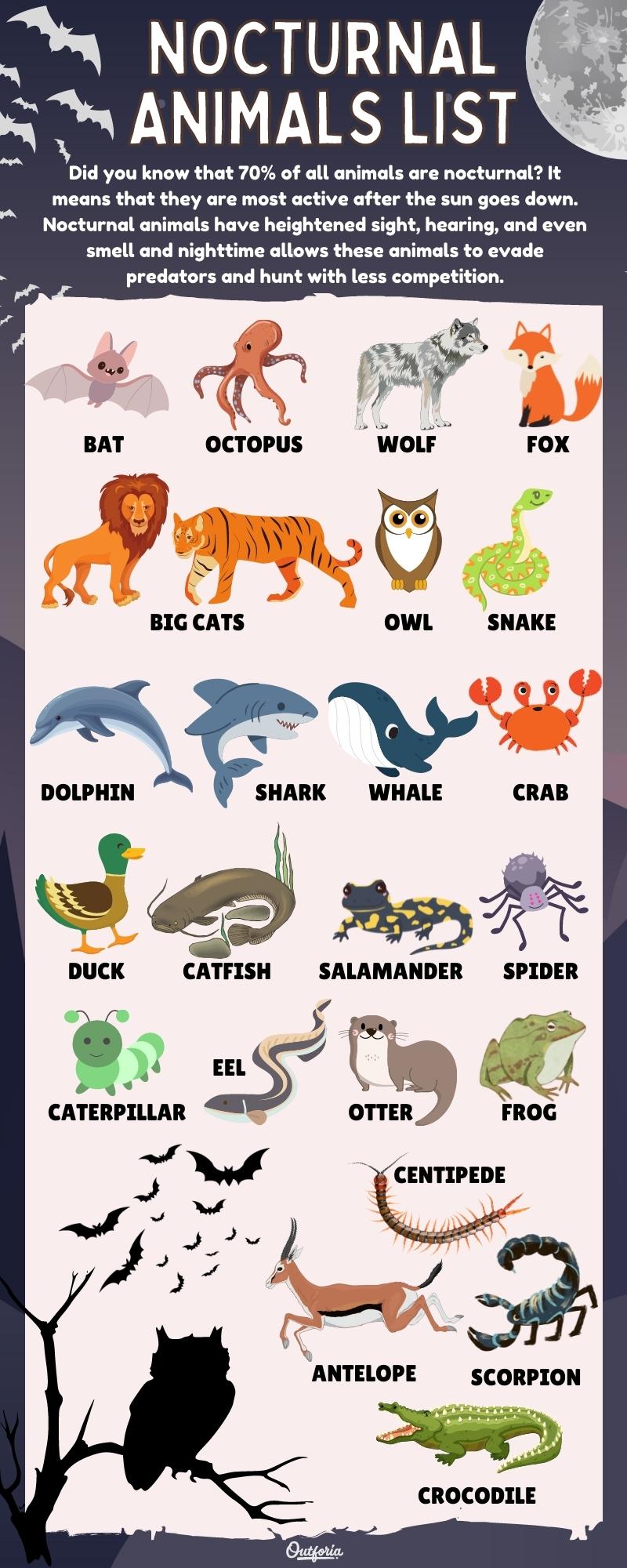Night Hunter: Tracking And Identifying Nocturnal Animals

Table of Contents
Understanding Nocturnal Animal Behavior
To become a proficient Night Hunter, you must first understand the creatures you're tracking. Nocturnal animals, active primarily at night, exhibit diverse behaviors and adaptations.
Activity Patterns
Nocturnal activity isn't uniform. Some animals are crepuscular, meaning they're most active during twilight hours (dawn and dusk), while others are strictly nocturnal, active only under the cover of darkness.
- Crepuscular Examples: Owls often begin hunting at dusk and continue into the early night, while deer are frequently crepuscular, feeding at dawn and dusk.
- Nocturnal Examples: Bats rely on echolocation to navigate and hunt insects throughout the night. Raccoons, however, exhibit more flexible activity patterns, being active at night but also sometimes venturing out during the day, especially when food is scarce.
- Seasonal Variations: Activity patterns can change with the seasons. Shorter days in winter may shift nocturnal activity to earlier hours, while longer summer nights might extend foraging periods. Understanding these seasonal variations is crucial for successful night hunting. The availability of prey also plays a significant role in the timing of nocturnal activity cycles.
Sensory Adaptations
Nocturnal animals possess incredible sensory adaptations to compensate for the lack of light. Sight, while often diminished compared to diurnal animals, is supplemented by highly developed senses of hearing, smell, and touch.
- Exceptional Hearing: Owls boast exceptional hearing, allowing them to pinpoint prey even in complete darkness. Their asymmetrical ear placement provides directional hearing acuity.
- Keen Sense of Smell: Raccoons use their remarkably sensitive noses to locate food sources. This acute sense of smell allows them to find insects, grubs, and other food items even under dense foliage.
- Echolocation Mastery: Bats employ echolocation, emitting high-frequency sounds and interpreting the returning echoes to navigate and hunt insects in the dark. Understanding these adaptations is vital for anticipating animal movement and effectively tracking them. Their reliance on sound, for example, means careful observation for even the slightest rustle could lead to a successful observation.
Essential Tracking Techniques for Nocturnal Animals
Tracking nocturnal animals requires patience, sharp observation skills, and specialized techniques.
Following Tracks and Trails
Identifying and interpreting animal tracks in the dark presents a unique challenge. Using a headlamp with a red filter—which preserves your night vision better than white light—is crucial.
- Identifying Track Types: Learn to distinguish between paw prints, scat (animal droppings), and drag marks. Size, shape, and spacing of footprints reveal gait patterns and can help identify the species.
- Track Measurement and Analysis: Accurately measuring track dimensions and observing gait patterns (walking, trotting, bounding, etc.) provides additional information for identification. Refer to field guides specific to your region for accurate identification of animal tracks.
- Resources: Many online resources and field guides offer detailed illustrations and descriptions of animal tracks, assisting in identification.
Utilizing Other Signs
Animal tracks aren't the only clues. Nocturnal animals leave behind a variety of other telltale signs.
- Owl Pellets: These regurgitated masses of indigestible bones and fur are excellent indicators of owl presence. Analyzing the contents can even help determine the owl's prey.
- Gnaw Marks and Scratch Marks: Look for gnaw marks on trees or scratch marks on the ground – evidence of foraging behavior.
- Scat Analysis: Scat offers valuable insights into an animal's diet and can help in identification. Examine color, shape, size, and contents.
- Vocalizations: Listen carefully for the characteristic calls and sounds of nocturnal animals. Learning to identify owl hoots, bat chirps, or raccoon vocalizations is a crucial skill.
- Scent Marking: Many mammals utilize scent marking to communicate and establish territory. Look for evidence of urine or scat strategically placed. Understanding territorial behavior adds a further dimension to your tracking efforts.
Equipment and Safety for Night Hunting
Proper equipment and safety precautions are paramount for successful and safe night hunting.
Essential Gear
Investing in the right gear significantly enhances your night hunting experience.
- Red Light Headlamp: Essential for preserving night vision. Avoid bright white light, which can startle animals and impair your own vision.
- Binoculars: For detailed observation of animals at a distance. Choose binoculars specifically designed for low-light conditions.
- Night Vision Equipment: Night vision devices, ranging from monoculars to sophisticated scopes, can greatly enhance your ability to spot and observe nocturnal wildlife, especially in densely vegetated areas.
- Camera Traps: Motion-activated cameras can provide valuable data and photographic evidence of nocturnal animal activity.
Safety Precautions
Always prioritize safety when observing wildlife at night.
- Awareness of Surroundings: Be aware of your surroundings, avoiding dangerous areas and obstacles.
- Avoiding Dangerous Animals: Research potential hazards, such as venomous snakes or aggressive predators, specific to your location and take appropriate precautions.
- Appropriate Clothing: Wear layers of clothing suitable for the climate and terrain, providing protection from the elements and potential hazards.
- Stay on Marked Trails: Avoid venturing off trails, especially in unfamiliar areas.
- Inform Someone of Your Plans: Always let someone know where you're going and when you expect to return.
Conclusion
Becoming a skilled Night Hunter requires a combination of knowledge, skill, and responsible practice. By understanding nocturnal animal behavior, mastering various tracking techniques, and utilizing appropriate equipment, you can safely and effectively observe these captivating creatures. Remember to always prioritize safety and respect wildlife.
Become a skilled Night Hunter! By applying these techniques and respecting wildlife, you can embark on exciting nocturnal adventures and deepen your understanding of these fascinating creatures. Continue your journey into the world of nocturnal animal tracking and identification. Learn more about [link to relevant resources].

Featured Posts
-
 Winning Ways Chaplins Contribution To Ipswich Town
May 11, 2025
Winning Ways Chaplins Contribution To Ipswich Town
May 11, 2025 -
 Retragerea Lui Thomas Mueller Un Capitol Inchis Cu Emotii Intense
May 11, 2025
Retragerea Lui Thomas Mueller Un Capitol Inchis Cu Emotii Intense
May 11, 2025 -
 Mauricio Ruffys Spinning Kick Ko Ufc 313 Training Footage
May 11, 2025
Mauricio Ruffys Spinning Kick Ko Ufc 313 Training Footage
May 11, 2025 -
 Jay Kelly I Nea Komodia Toy Netflix Me Ton Tzortz Kloynei
May 11, 2025
Jay Kelly I Nea Komodia Toy Netflix Me Ton Tzortz Kloynei
May 11, 2025 -
 Celtics Clinch Division Dominant Victory Over Opponent
May 11, 2025
Celtics Clinch Division Dominant Victory Over Opponent
May 11, 2025
